A Visit to Three Cities in
GALICIA
(Part 2)
There are 17 autonomous communities in Spain, self-governed areas of the country much like states in the United States. At the same time, Comunidads are much more than simply governmental entities. The autonomous community of Galician (shown below in red on the map) is located in the far northwest of Spain. Galicia has its own language and a social and cultural history sometimes quite distinct from the rest of Spain.
Previously, I documented Vigo and Santiago de Compostela, two of the most well-known cities in Galicia. This posting describes A Coruna, a port city dating to the Roman times that is another equally distinct Galician...and Spanish place, home to 245,000 inhabitants - and 250,000 tourists each year.
"The city is the provincial capital of the province of the same name, having also served as political capital of the Kingdom of Galicia from the 16th to the 19th centuries, and as a regional administrative centre between 1833 and 1982...A Coruña is a busy port located on a promontory in the Golfo Artabro, a large gulf on the Atlantic Ocean. It provides a distribution point for agricultural goods from the region."
(WIKIPEDIA)
(Photo by others)
LA CIUDAD DE CRISTAL
(The "Crystal City")
as exemplified in the
Avenida de la Marina Buildings
I have to admit to not being prepared for the "crystal city." Once I saw the Avenida de la Marina facades I was captivated. An incredibly coherent and engaging cityscape, among the most distinct of any I had seen before. The backstory is that during the 18th century, the new residents of a series of multi-story apartment buildings around the waterfront discovered that their open balconies overlooking the ocean were in the direct path of ocean winds and water spray.
Clearly, the balconies were useless for many months of the year. They all started to enclose the open balconies with glass, turning the frontages into warm greenhouses. This climate imperative became a style de rigueur throughout the city. I took numerous photographs of the resulting facades. I have to admit that although I might be close, none quite capture the remarkable effect on site. One of those instances where you need to be there.

PLAZA DE MARÍA PITA
Behind the Avenida de la Marina buildings is the city's main plaza. You can see a glimpse of it through the arched opening in the second photo above and through another gateway in the first photo below.
"Since 1897, this square has been home to A Coruña City Hall, a building designed in the Spanish Modernist style. The square is named after María Mayor Fernández de la Cámara y Pita. She is seen as a symbol of the resistance against the attack by Sir Francis Drake, who raided A Coruña in reprisal for the city’s support for the Spanish Armada."
"Since 1897, this square has been home to A Coruña City Hall, a building designed in the Spanish Modernist style. The square is named after María Mayor Fernández de la Cámara y Pita. She is seen as a symbol of the resistance against the attack by Sir Francis Drake, who raided A Coruña in reprisal for the city’s support for the Spanish Armada."

TORRE
DE HÉRCULES
(Tower of Hercules)
"The Tower of Hercules has served as a lighthouse and landmark at the entrance of La Coruña harbour in north-western Spain since the late 1st century A.D. when the Romans built the Farum Brigantium. The Tower, built on a 57 metre high rock, rises a further 55 metres, of which 34 metres correspond to the Roman masonry and 21 meters to the restoration directed by architect Eustaquio Giannini in the 18th century, who augmented the Roman core with two octagonal forms. Immediately adjacent to the base of the Tower, is a small rectangular Roman building. The site also features a sculpture park, the Monte dos Bicos rock carvings from the Iron Age and a Muslim cemetery. The Roman foundations of the building were revealed in excavations conducted in the 1990s. Many legends from the Middle Ages to the 19th century surround the Tower of Hercules, which is unique as it is the only lighthouse of Greco-Roman antiquity to have retained a measure of structural integrity and functional continuity."
(UNESCO World Heritage Designation, 2009)
Until the 20th century, the tower itself was known as the "Farum Brigantium". The Latin word farum is derived from the Greek pharos for the Lighthouse of Alexandria. The structure is 55 metres (180 ft) tall and overlooks the North Atlantic coast of Spain. The structure, built in the 2nd century and renovated in 1791, is the oldest Roman lighthouse in use today...its base preserves a cornerstone with the inscription MARTI AUG.SACR C.SEVIVS LVPVS ARCHTECTVS AEMINIENSIS LVSITANVS.EX.VO, permitting the original lighthouse tower to be ascribed to the architect Gaius Sevius Lupus, from Aeminium (present-day Coimbra, Portugal) in the former province of Lusitania, as an offering dedicated to the Roman god of war, Mars.
The Romans who conquered this region of Spain believed it to be, in a figurative sense, the end of the earth—whence its name, Finisterra.
(WIKIPEDIA)

On site, and as is clearly shown in the Tower's interpretation center, the lighthouse has been altered beyond recognition from its original form. Aside from the fact that there has been a structure there since Roman times, the exterior design history at the very least is confusing at best.
In 1788, the original three-story tower was given a neoclassical restoration, including a new fourth story. The restoration was undertaken by naval engineer Eustaquio Giannini during the reign of Charles III of Spain. It was finished in 1791. The following two photographs are images, copyrighted in 1999 by Enrique Cabarcos, based on archaeological reconstructions of the Tower through time.
If this was indeed the state of disrepair in the late 18th century, a wholesale reconstruction was warranted. By today's architectural conservation standards, the resulting structure is less than salutatory. Much of the sense of the scale and appearance of the original structure has been completely lost. It remains a major tourist attraction.
A contemporary sculpture on the "overland" approach
to the Tower.
Interior mid-level exhibition space.

STREET SCENES
Santo Domingo Monastery

MUSEO DE BELAS ARTES
(A Coruña Fine Arts Museum)
Manuel Gallego, Architect, Galicia
1995
"Located in the old plot of the Capuchin Sisters Convent, the new building is born from the old construction made by Fernando Casas y Novoa in 18th century."
MERCADO MUNICIPAL DE SAN AGUSTIN
(San Agustin Municipal Market)
And
PLAZA DEL HUMOR
(Humor Square)
"Enjoying art for free is only possible in this square placed in front of San Agustin’s Market. Within the square there are different pictures of international comic characters i.e. Asterix and Obelix, Spanish characters like Mortadelo and Filemón or even Galician writers such as Castelao and Vicente Risco."
CASTILLO DE SAN ANTÓN
(Castle of San Antón)
Archaeological and Historical Museum
Mid-to-late-16th Century
(Above two photos by others.)
UNIVERSIDADE DA CORUNA
(University of A Coruna)
MARITIME ADMINISTRATION CENTER
STREET ART
Interior, but most probably the work of a street artist.


_____________________________________________
Copyright © 2017 Benjamin Clavan






















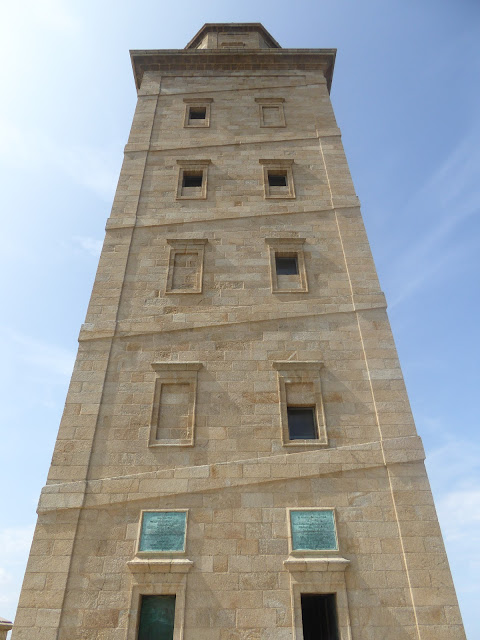










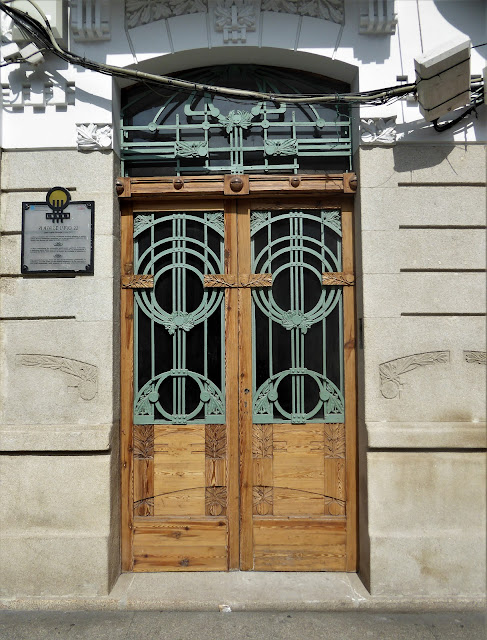






















































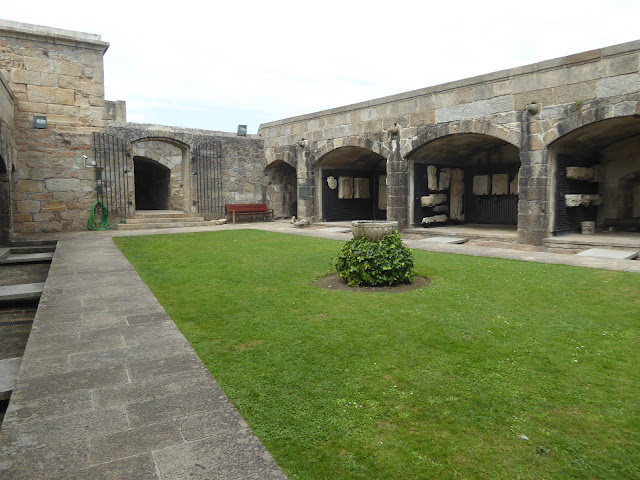




























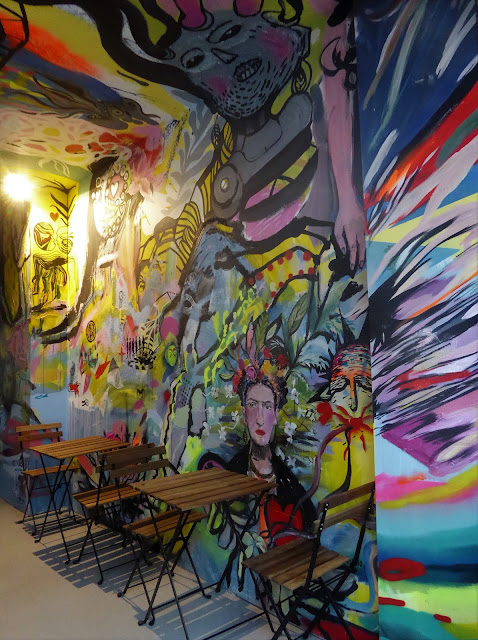
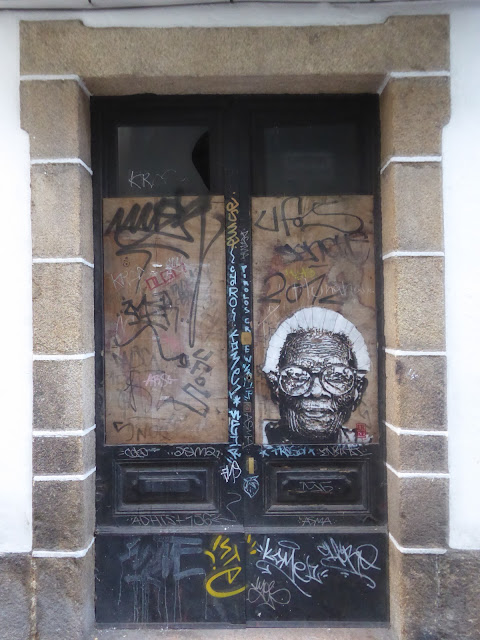




No comments:
Post a Comment